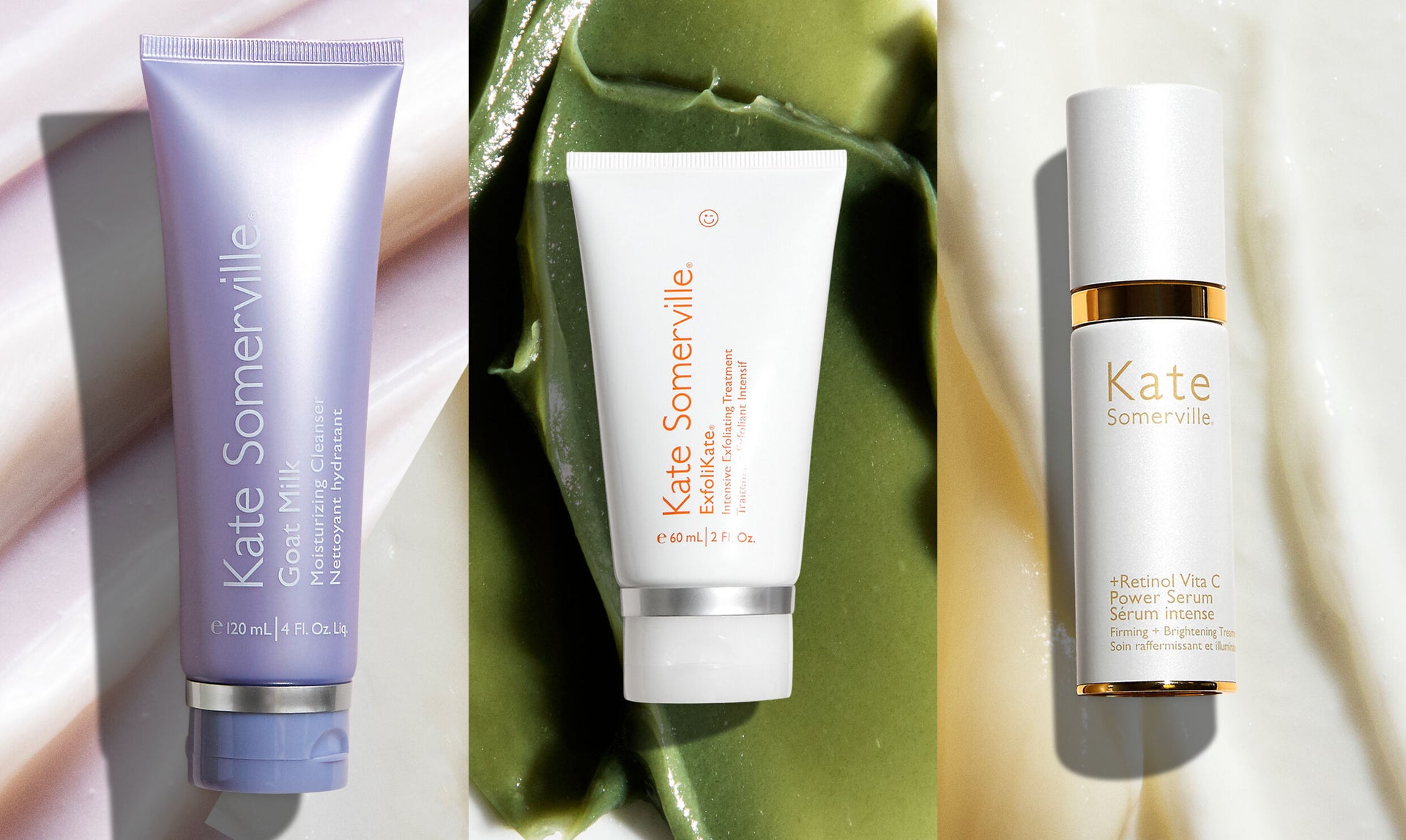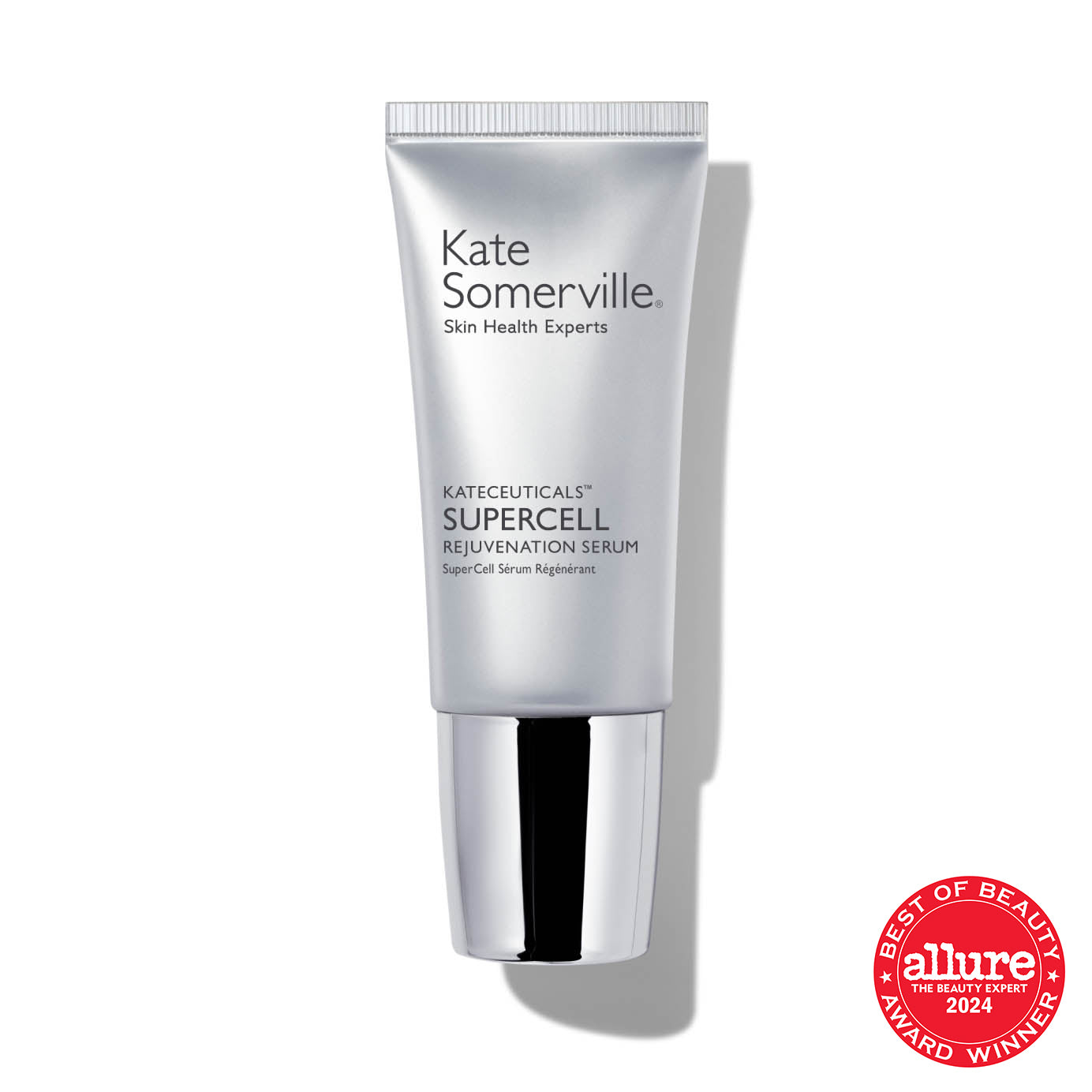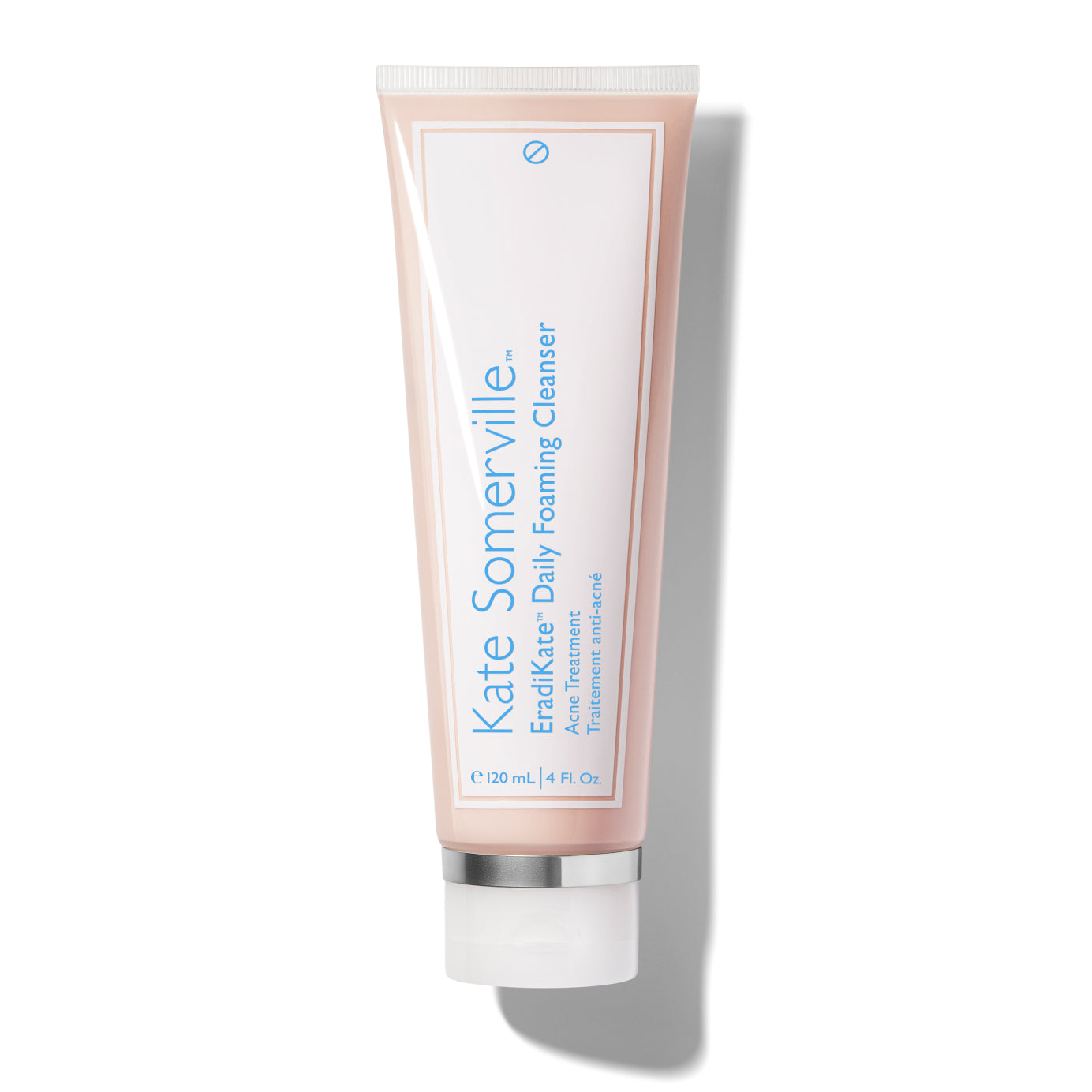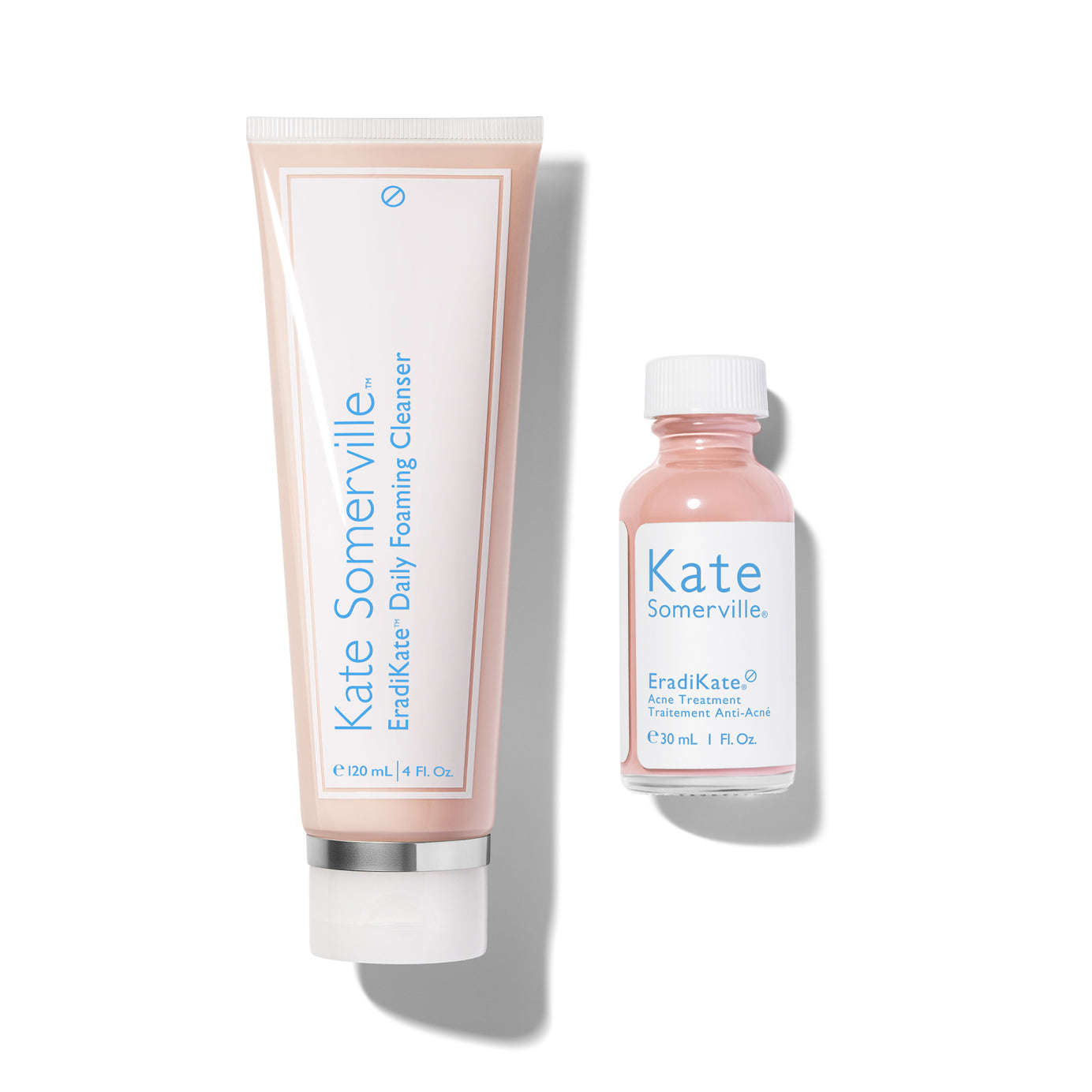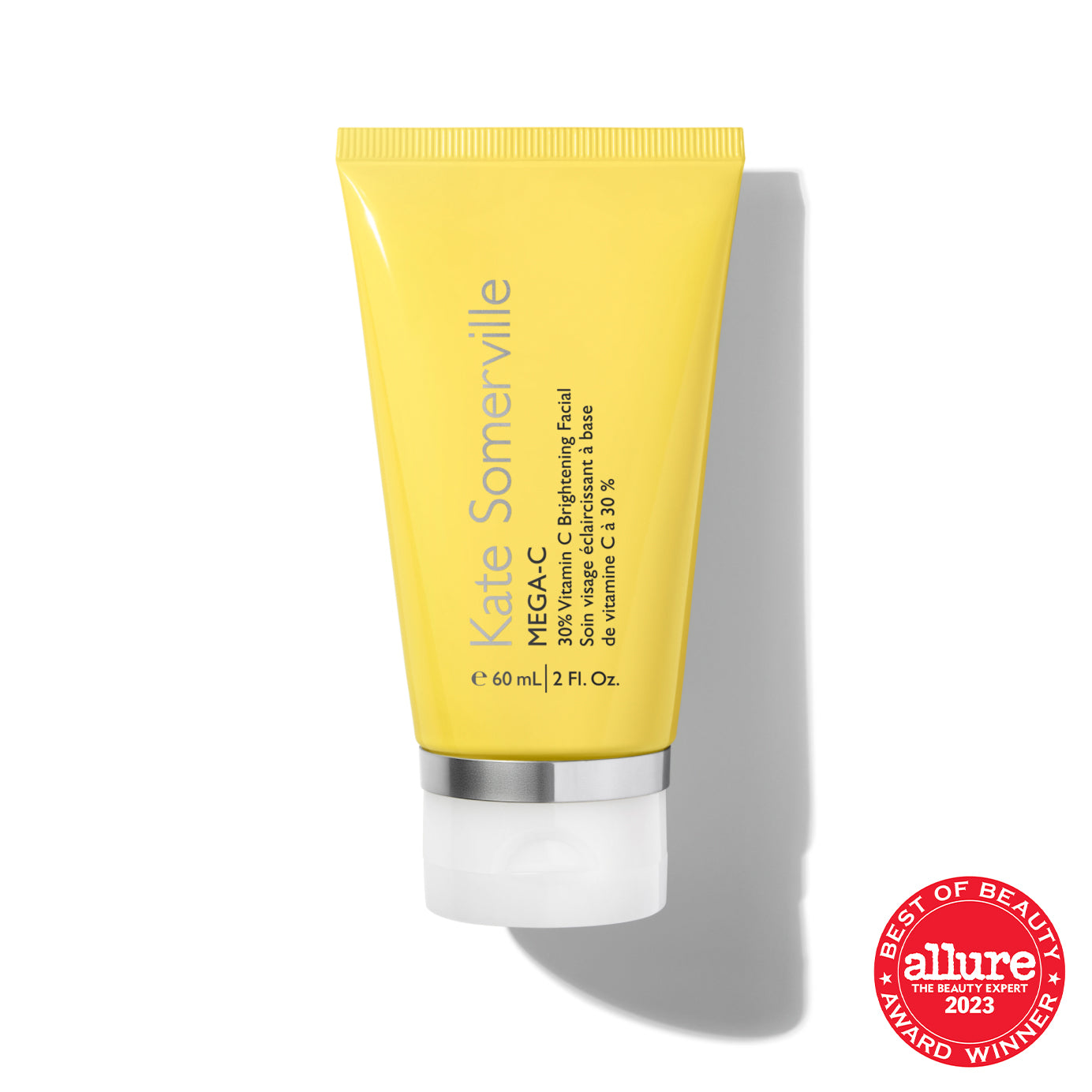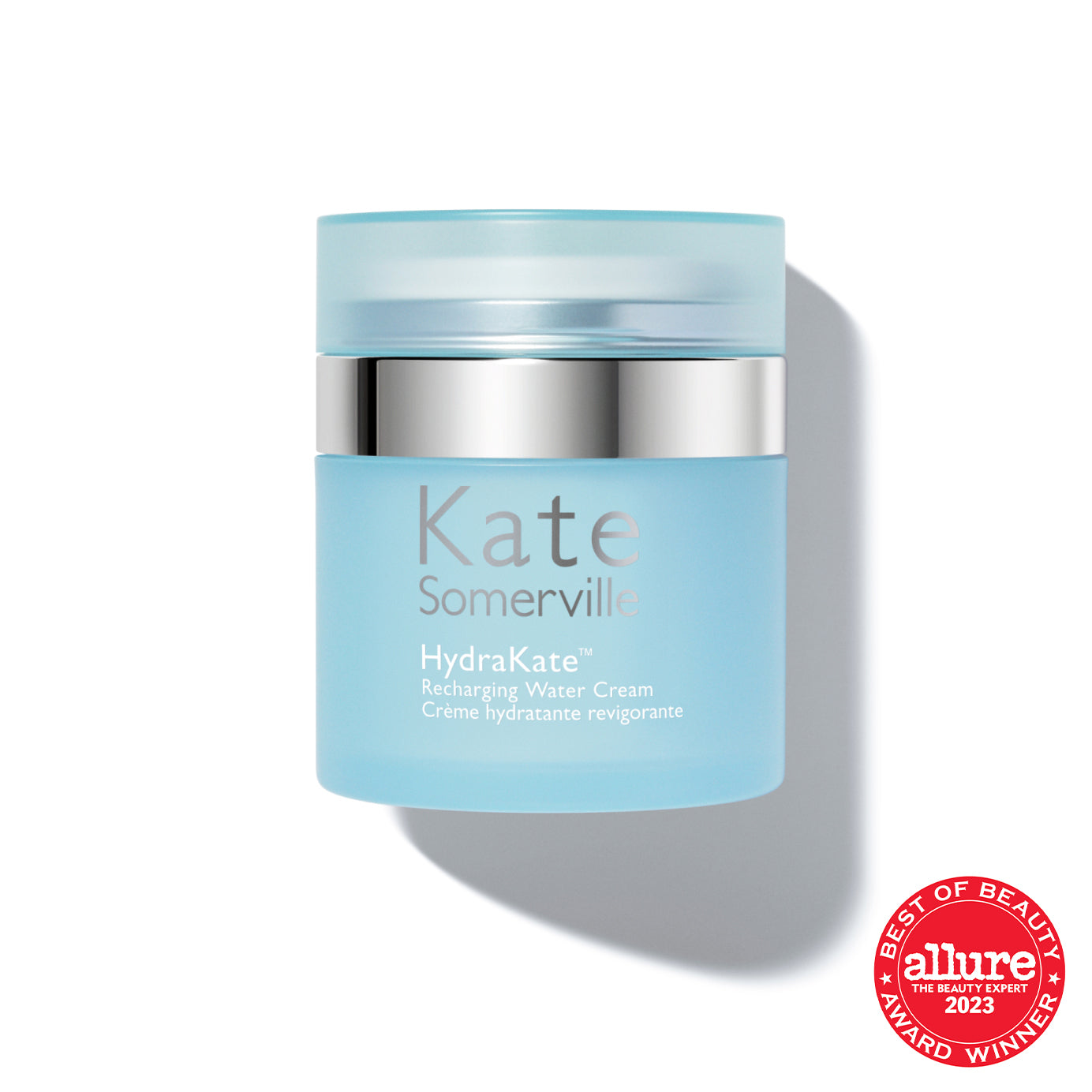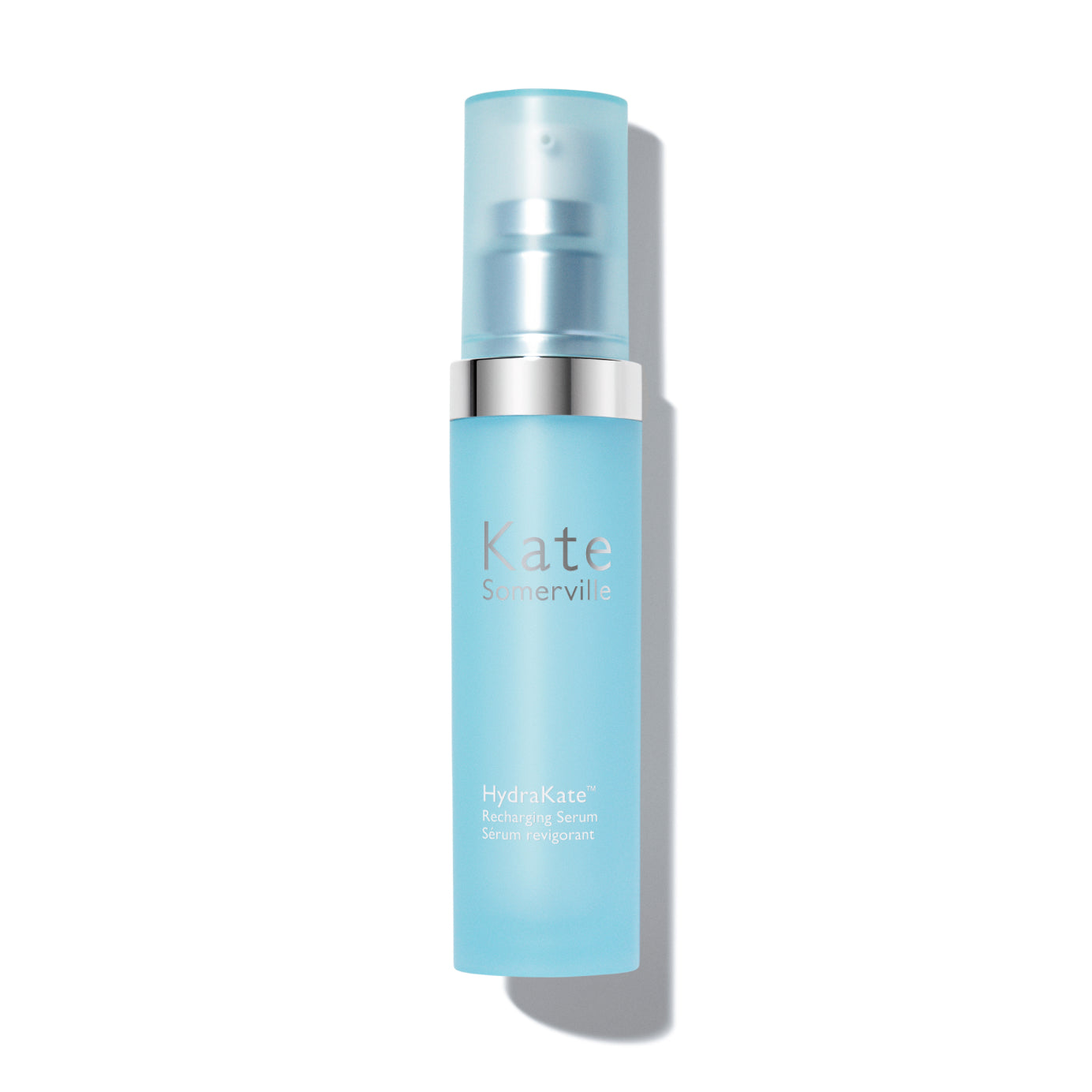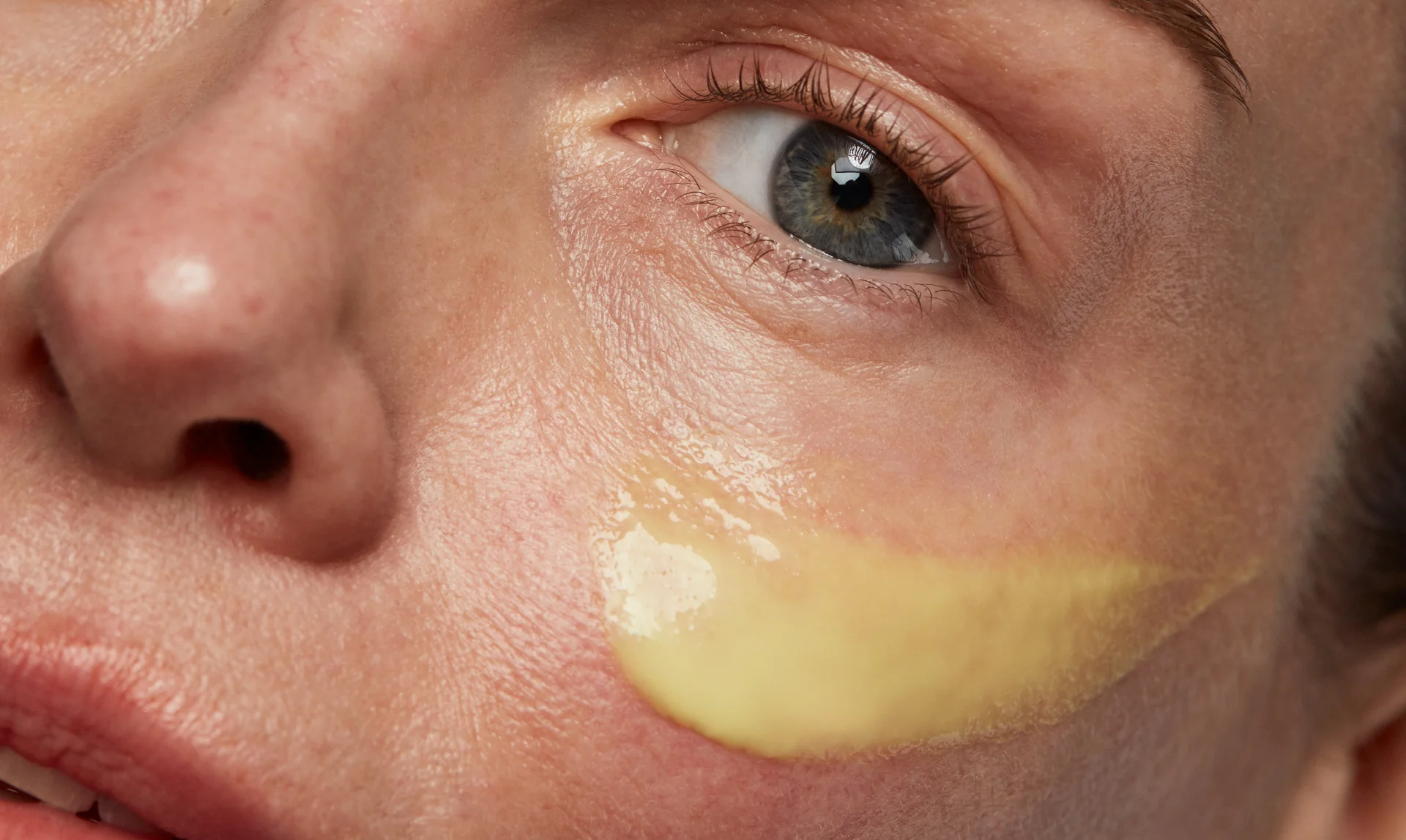How to Tell If My Skin is Purging or Breaking Out
Sometimes, finding a skincare routine that provides noticeable results feels like a science experiment.
One week you’re using a chemical exfoliant and don’t see an immediate difference. The next, you’re trying a completely different acne treatment, only to notice your skin isn’t any smoother. Rather, it’s created its own unfavorable side effects, like flaky skin and—gasp—new bouts of breakouts.
This leaves you to wonder—are you dealing with an acne breakout, or are you experiencing what’s known as skin purging?
Before you toss that new product in the bin (or blame your favorite frenemy, acne), it’s helpful to have a clear understanding of the fundamental differences between the two. Then, you can figure out which one you may be experiencing—and determine the best way to move forward for clearer skin.
What is Skin Purging?
When it comes down to it, the question of the hour is—what is purging skin? Simply put, a skin purge occurs when your skin reacts to an active ingredient in a new skincare product.
The skin purging process can easily be mistaken for an acne flare-up. With pimples, blackheads, redness, and bumps that give your skin a rough texture, it’s easy to see why. But with the right information, you’ll be able to tell if it’s only a temporary setback like “the purge.”
For example, let’s say you’re using a product that contains ingredients like retinol, glycolic acid, or another exfoliating acid, which help to expedite cellular turnover. When you shed your dead skin cells, you’re replacing them with fresh, more radiant, healthier skin cells underneath. If you’re trying out a skin cycling routine, we recommend working with a Skin Health Expert at our clinic to help keep your skin healthy throughout a purge.
That healthy complexion you’re looking for wasn’t built in a day.
Before those new cells make way for brighter, smoother skin, you may notice other less pleasant side effects, like pimples, that pop up first. That’s because certain active ingredients speed up the rate of skin cell turnover, potentially causing temporary breakouts on your face.
Symptoms of Skin Purging
As those blemishes make an expedited exit through the skin's surface, they can take shape in a variety of forms. While the purging process is different for each person, generally, symptoms of skin purging include:
• Whiteheads
• Blackheads
• Papules
• Pustules
• Dry, flaky sensitive skin
How Long Does Skin Purging Last?
If your skin is purging, you should begin to see clearer skin after four to six weeks of consistent use with your skincare treatment (approximately one skin cycle). Although a month filled with pimples and dry skin may feel neverending, the resulting rejuvenated skin is worth the wait.
However, if the breakouts persist after six weeks, consider speaking to a dermatologist. They can give you recommendations regarding whether you should continue using that skincare product or seek a different form of treatment.
How Does Acne Compare?
In contrast, acne is an inflammatory disorder that occurs when your pores become clogged with excess sebum and dead skin cells. The resulting acne appears as raised bumps on top of (and underneath) the outer layer of your skin, usually in the form of pimples, pustules, and papules.
To add to skincare aficionados’ confusion, the appearance of acne is very similar to the pimples that form due to skin purging. However, the difference between the two is that skin purging usually occurs as a result of individuals seeking to diminish their acne or acne scars through the use of products. And unlike skin purging, which goes away in about a month, bouts of acne can last for months or even years.
In a nutshell, one tool you can use to distinguish skin purging vs acne is time. If you’ve experienced acne breakouts before, and continue to experience them after trying a new product, purging may not be the culprit. But if pimples appear on relatively clear skin quite suddenly—and coincide with a new item on your skincare shelf—it’s worth investigating if that product is the cause.
How to Prevent Skin Purging
Just because your skincare products contain active ingredients doesn’t mean you’re destined for pimples and dry skin. You can lessen your chances by slowly easing products with active ingredients into your skincare regimen.
For example, if you’re interested in incorporating a product that can improve your skin’s texture, try our + Retinol Vita C Power Serum Firming and Brightening Treatment. Not only does it help create smoother skin, but it can also brighten and firm your skin to give you an enviable, youthful glow.
You can slowly introduce the product into your routine by using it once or twice during the first week. During that time, monitor your skin’s reaction to the active ingredient, retinol. After that, you can adjust the number of times you use it each week (up to four times a week) until you find a number that’s agreeable to your skin.
Find Your Most Radiant Skin with Kate Somerville
Finding the perfect balance of skincare products doesn’t have to feel like a never-ending science project. With the right skincare ingredients, you can have the clear, healthy-looking skin you’ve been dreaming of.
At Kate Somerville, we’ve formulated the ultimate nourishing skincare products for every skin type. Whether you’re looking for a weekly exfoliant like ExfoliKate® Intensive Exfoliating Treatment that delivers three-in-one exfoliation or you’re looking for a soothing cleanser like the Goat Milk Moisturizing Cleanser, we offer a wide selection of luxurious skincare products with your skin in mind.
Browse our collection and begin your journey to brighter, more youthful-looking skin today.
Sources:
NIH. Hydroxy Acids, the Most Widely Used Anti-aging Agents
https://www.ncbi.nlm.nih.gov/pmc/articles/PMC3941867/
PRS. Skincare Bootcamp: The Evolving Role of Skincare.
https://journals.lww.com/prsgo/Fulltext/2016/12001/Skincare_Bootcamp__The_Evolving_Role_of_Skincare.7.aspx
AAD. Acne: Signs and Symptoms. https://www.aad.org/public/diseases/acne/really-acne/symptom
AAD. 9 Things to Try When Acne Won’t Clear. https://www.aad.org/public/diseases/acne/diy/wont-clear
NIH. What Is Acne? https://www.niams.nih.gov/health-topics/acne
AAD. Acne: Signs and Symptoms. https://www.aad.org/public/diseases/acne/really-acne/symptoms
NIH. Acne: Overview.
https://www.ncbi.nlm.nih.gov/books/NBK279211/
